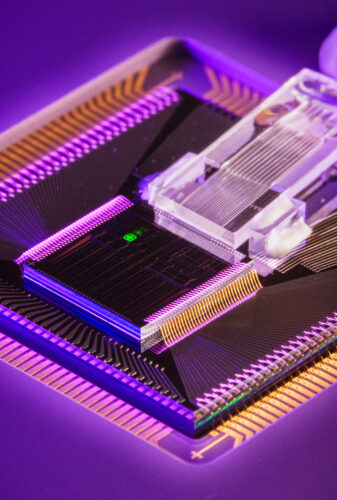Sandia National Laboratories has unveiled a groundbreaking advancement in navigation technology with the development of a quantum-based motion sensor capable of operating independently of GPS. This development carries significant implications for the military, especially given the increasing vulnerabilities of satellite-based systems in modern warfare.

The new sensor, leveraging atom interferometry, offers unprecedented accuracy in measuring acceleration and angular velocity. This technology represents a substantial leap forward from current navigation-grade devices, boasting a sensitivity a thousand times greater. Traditionally, such a device would occupy the space of a moving truck; however, Sandia’s innovation has dramatically reduced its size and power consumption, making it a viable option for military applications.
The heart of the system is a silicon photonic modulator chip, a miniature component that controls light on a microchip. This chip replaces bulky and power-hungry laser systems typically used in atom interferometers, significantly reducing the sensor’s overall size and cost. The modulator also exhibits exceptional performance in suppressing unwanted sidebands, a critical factor in ensuring the sensor’s accuracy. By miniaturizing this technology and integrating it onto a silicon photonic chip, Sandia researchers have overcome the size, weight, and power constraints that have traditionally hindered the practical application of atom interferometers.
The military implications of this breakthrough are profound. The increasing reliance on GPS in modern warfare has made it a critical vulnerability. The conflicts in Ukraine and Gaza have underscored this reality, with both sides employing electronic warfare tactics to disrupt enemy GPS signals. In such environments, a GPS-independent navigation system offers a decisive advantage. Autonomous systems, such as drones and missiles, could become far more resilient. From special forces operating in complex urban terrains to submarines navigating beneath the ocean’s surface, the ability to maintain accurate positional awareness without relying on GPS is a game-changer.
Beyond navigation, the sensor’s sensitivity to gravitational forces holds promise for applications such as underground cavity detection and resource exploration. Additionally, the underlying optical components have potential applications in LIDAR, quantum computing, and optical communications.
While the technology is still in its development stages, the implications for the future of military navigation are profound. As the sensor matures and becomes more readily available, it could revolutionize how military forces operate in GPS-denied or degraded environments.
For more information, hit the Source below